Ancient Cambodian History; The True Story of Angkor Wat. Part 1: Funan and Chenla
Welcome to the real history of ancient Cambodia! I am here to reveal all the secrets of the ancient Khmer past. The truth will be revealed. And all myths debunked.
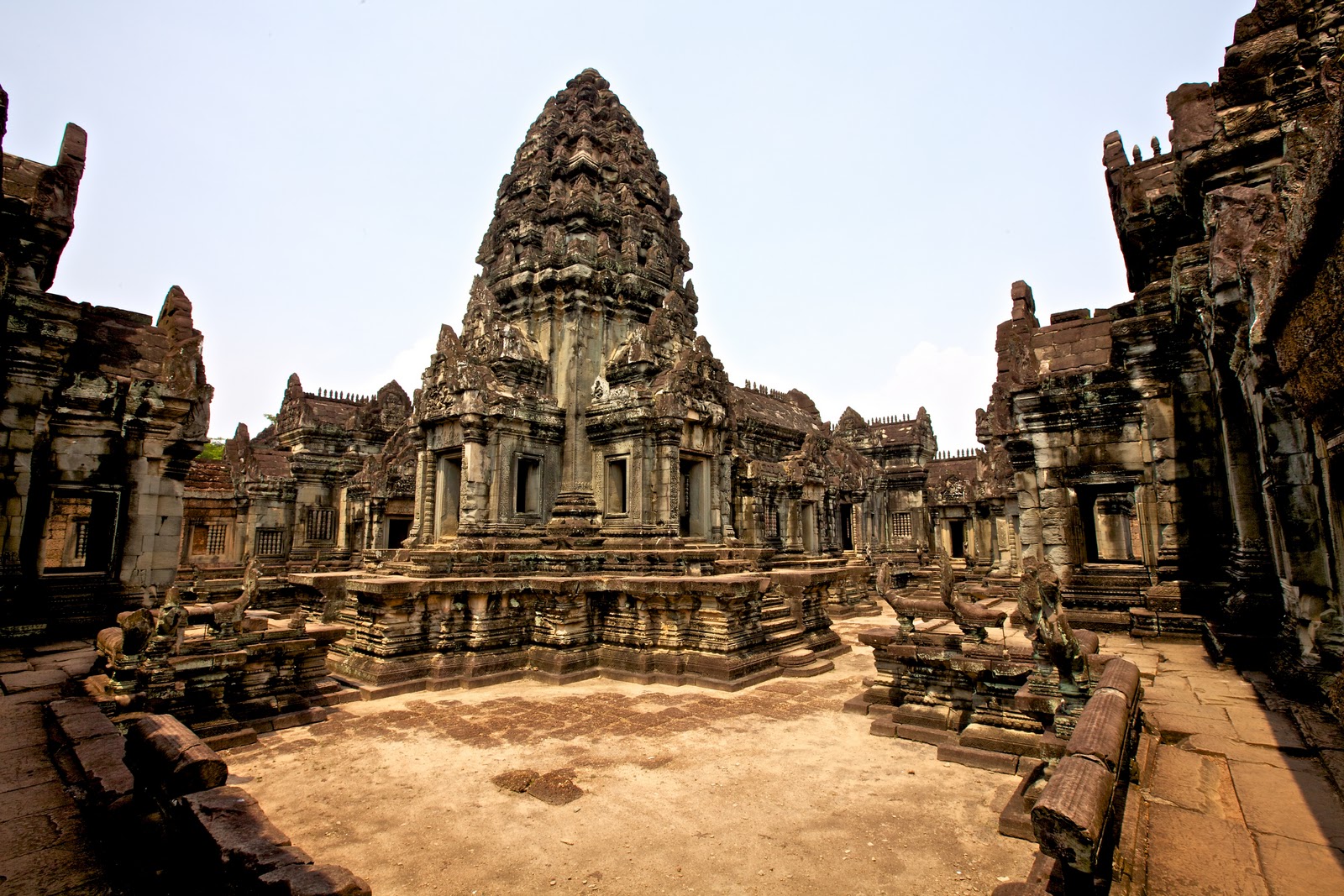
One of the most mysterious, but magnificent histories is often overlooked, but also very mischaracterized to fit an ethnocentric view by people from different backgrounds to claim the splendid Khmer culture to themselves.
With more than a million visitors each year, it is time to set the record straight. Let me take you on a journey through the real history of Kambujadesa (the official, ancient name of Cambodia), and the rise and demise of the city Angkor Wat; a place that every man and woman must see!
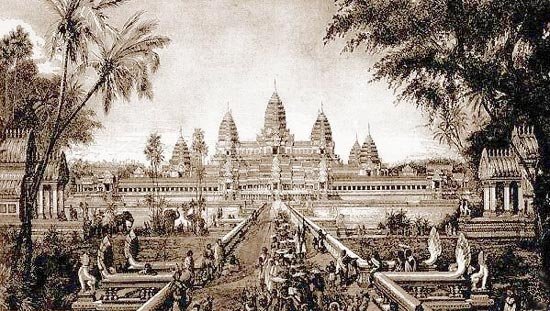
Funan: the birthplace of the Khmer
The story of Cambodia starts with the story of Funan. Funan is the name given to the earliest Cambodian kingdom, which derrived from the ancient Chinese descriptions. Although Funan was viewed as a kingdom by the Chinese, it can better be described as a collection of multiple muncipalities, of which the kings were related through royal blood lines.
Along the rivers and sea ports of Southern Cambodia/Vietnam, the early Cambodians started to form tribes and communities during the first centuries AD. They were accompanied by a group of Indonesian people, who sailed up from Borneo, and started to initiate a lively trade zone.
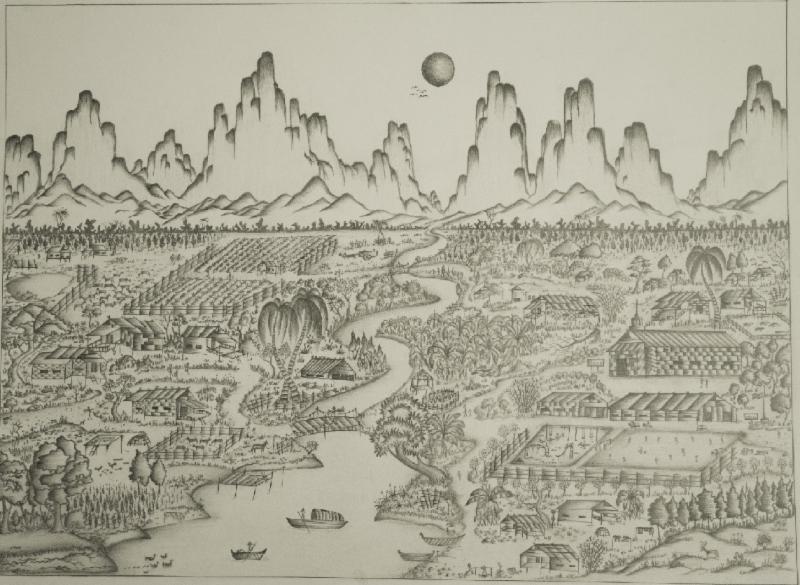
These Indonesians were masters of the sea. With big sailing ships, that could reach as far as Madagascar, they travelled the oceans between China, India, and Java.
The Cambodians were master traders, specialized in local products, which were traded and exported by the sea-farers' ships. The sea-farers and traders happily intermarried, giving rice to a hybrid race of bilingual leaders, who mixed together, ruled the lands and the waters.
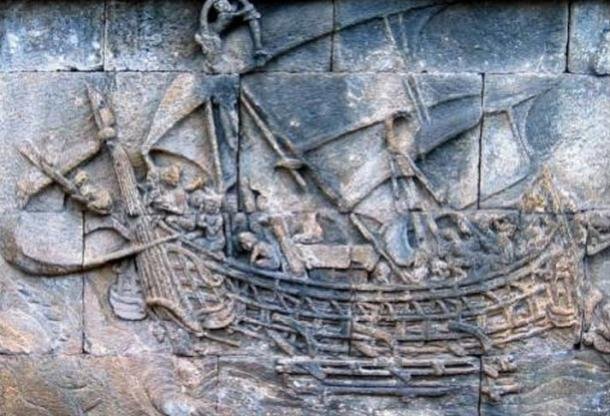
From the second century AD, the Indonesian sea-farers brought with them an Indian culture based on Hinduism. The Cambodians took over the religion. Together the two peoples developed a clear understanding of Sanskrit script and Hindu mythology, which was shaped to fit the indigenous animistic belief systems and hierarchies.
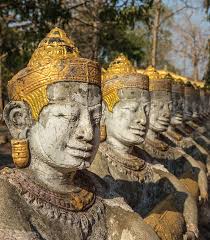
The origin story portrays this unification. According to inscriptions, both the Indonesians and the Cambodians claimed heritage from an Indian prince named Kaudinya. This prince sailed up to Cambodia, was met with hostility, but he subdued the princess by shooting an arrow on the beach, and the princess became his wife.
This mythical origin story portrays the situation well; Indonesians sailed up from Borneo, met the local inhabitants, and started a union based on Indian religion that was brought by the Indonesians from India.
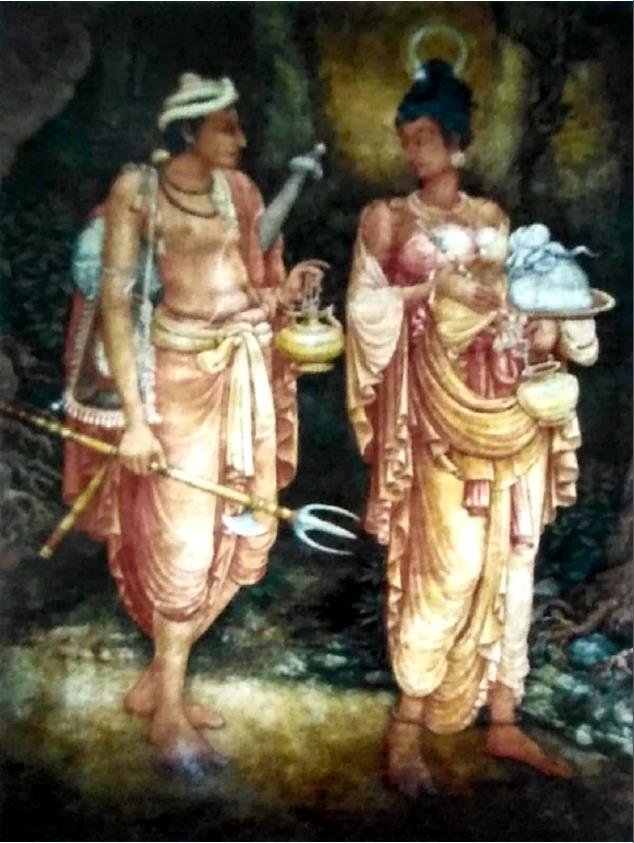
Between 200AD and 600AD, the territory of current Cambodia, Southern Vietnam, and Southern and Eastern Thailand was in the hands of the Cambodian kings. The Indonesian kings set up a separate kingdom along the coast of Vietnam called Champa.
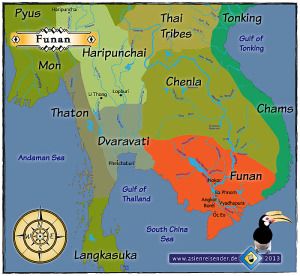
Champa was a collection of Indonesian (Cham) speaking city-ports, that competed with each other for the control over trade, but also competed with the ethnically mixed region of Funan, resulting in numerous deadly wars and battles.
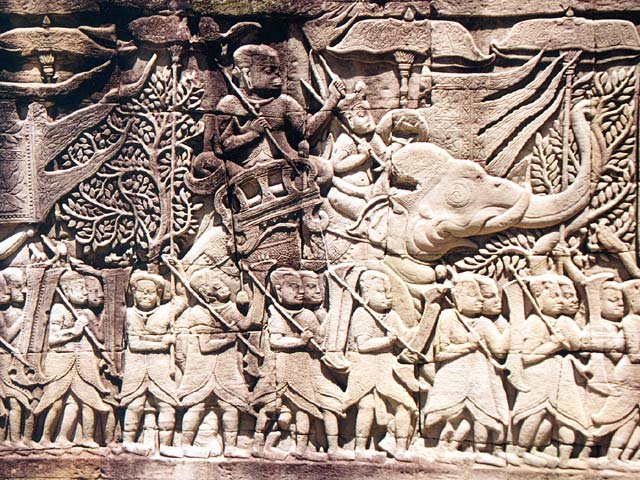
The Funanese moved as far as the Malay Peninsula, and started setting up new trade points and city-states. The new states were founded by Funanese royalty, who in their god-like perspective happily subdued any inferior population to ensure enough labour and soldiers. At one point the Funanese royalty moved upwards into Northern Cambodia, encountering more Cambodian people to add to their populations.
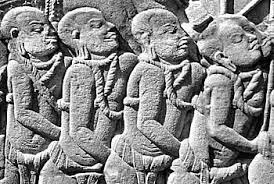
The Chinese were impressed by the Funanese. They praised the architectural structures, together with the advanced culture that the Funanese had developed.
They also looked down upon the Khmers, describing the people as black with curly hair, and primitive because they didn't cover their upper body, which was heavily covered in tattoos. There was clearly an elite culture and a peasant culture.
The tattooed Funanese must have been the servant people, who were covered with indigenous tattoos, which they most likely used for protection going into battle (a forerunner or variant of the Sak Yant tattoo-practices).
The curly hair is interesting, since some of the Cambodian minorities living in the South, still posess negroid features, reminiscent of the Austro-Melanesian 'negrito's', of which some still inhabit the lands of Southern-Thailand and Malaysia.
See below; a picture of a young Cambodian girl with curls, from the ethnic minority Samrai, and an Indonesian tribes' man covered in tattoos, maybe representative of an early Funanese?
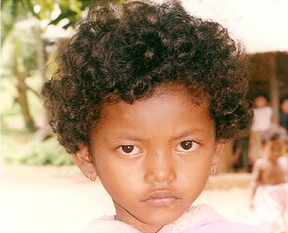
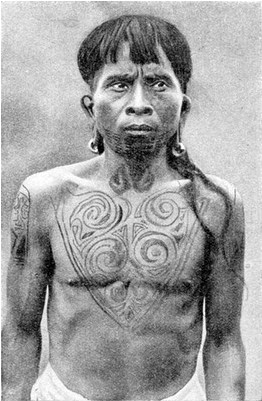
As the sea trade declined, un upward movement of new settlements emerged from both the Funanese and the Chams. This resulted in a fierceful competition. The Chams and the Cambodians grew out to become bitter rivals, although fighting among themselves was just as common.
As the Funanese moved upward into Northern Cambodia/South Eastern Thailand, the use of Cambodian language became more prevalent. The Chams had developed their own language around 400AD, based on the Sanskrit script they used for centuries. After using Sanskrit for many centuries, around the 7th century, the Cambodians started to write their own language as well. From the same script of Sanskrit the Khmer language was born!
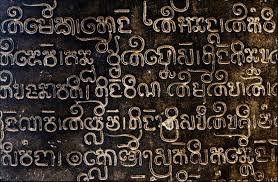
With the declining sea trade, the city-states of Funan became more competitive, resulting in multiple fractions warring with each other. The Cham fractions did the same, but pointed their focus on gaining more control over Funan. Funan was in despair.
In the 7th century Funan was no longer known as Funan, but described by the Chinese as Chenla. The name Chenla most likely derrived from the Khmer words; 'Cham brap', which means 'having put down the Cham'. A similar name is found for Siem Reap, where Cham is replaced by Siem (for Siamese kingdom). The name probably derrived from a big battle that was won against the Cham (maybe the victory of the territory of Champassak?)
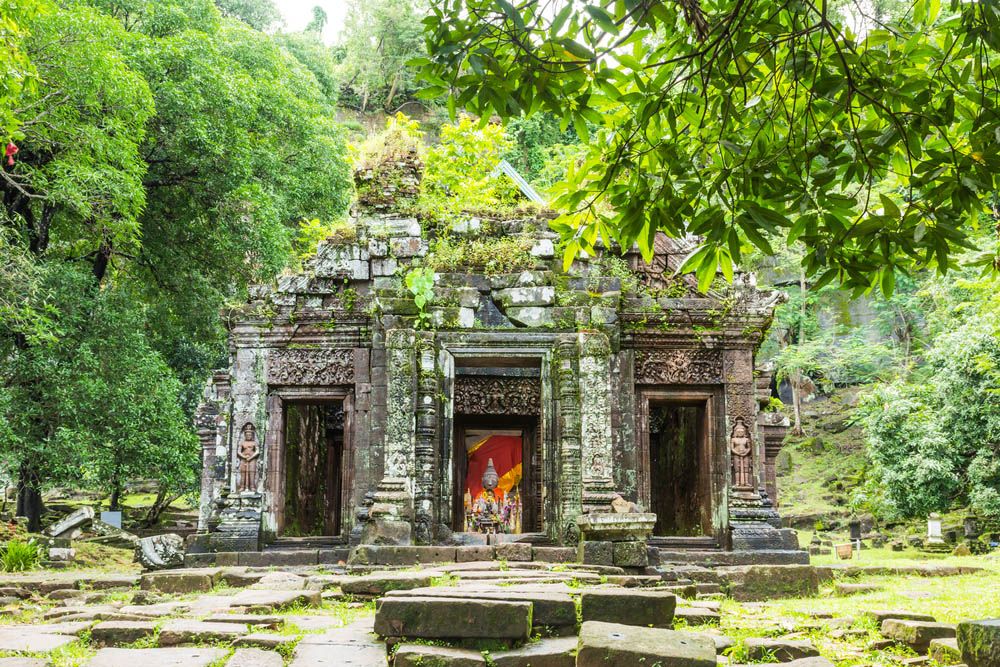
In the 700s, Chenla was conquered by Champa. A folk legend tells the story of a Cham king, who sailed up to the Cambodian capital, sieged the city, and decapitated the Funanese king Jayavarman I. He took his son as a ward, and educated and raised him under the guidance of the new ruler. This prince would become the most famous warrior king in the history of Funan and Chenla.
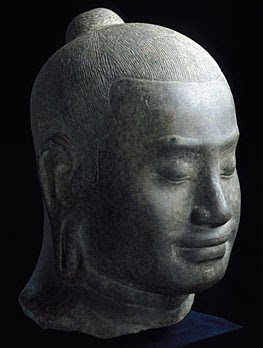
There are a few huge misconceptions about the history of Funan and Chenla.
Misconception 1: The people of Funan were solely Indonesian, not Khmer
This is wrong. The sudden widespread use of Khmer in the region of Funan indicates that there already was a big presence of a Khmer speaking population.
The material culture also differed from Indonesian people. The Cham people were able to convert all the local people they encountered to speak their language, even in the remote highlands of Vietnam. This was not the case in Funan, where the Funanese developed a Khmer language and started using it in the whole region.
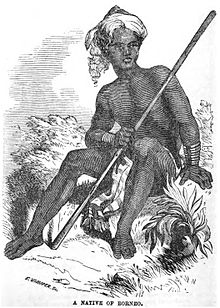
The vast presence and influence of Indonesian people can not be denied. The vocabulary of the Khmer was clearly influenced by the Cham, already from prehistoric times, with extra regard to vocabulary concerning the sea trade.
The Indonesians were culturally dominant. They were the ones traveling the oceans and bringing back Indian culture. The Sanskrit script that Funan used was copied from the Chams, just as the royal titles, and much of the royal traditions.
The name of both the Cham and Funanese kings ended with the suffix 'Varman'. One of the great kings of Chenla, for example, was called Isanavarman, who founded the capital Isanapura. The region of Eastern Thailand is still called Isan (อีสาน), named after the historic capital.
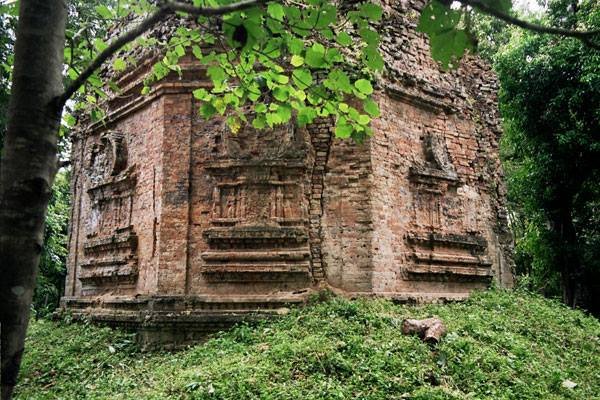
Misconception 2: The Cambodians were colonized by Indian or Persian Hinduists.
There is no indication at all that this is true. Both the Chams and Funanese adopted Hindu mythology to represent themselves. They both had a style of writing Sanskrit which was very technical and consistent without modifications.
This is contrary to Sanskrit scripts of other populations, which were indeed colonized by Indian or Persian Brahmanic usurpers. A good example is the Sanskrit script of a kingdom called Srivijaya, which clearly shows the influence and modification by Indian speaking people.
Also, the culture of Funan doesn't show any signs of an Indian society. For instance, an Indian caste system. The culture of Funan does show a system based on indigenously developed relations. The same goes for Champa.
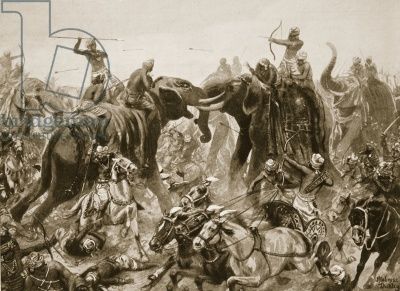
Misconception 3: The Funanese were not Khmer, but other related tribe like the Mon
It is pretty irrefutable that Funanese people were anything but Khmer. Of course, in those times, there didn't exist something as a unified Khmer identity. The (old) Khmer language does indicate a strong similarity with the languages of populations in Cambodia that have stayed isolated since prehistoric times. It can therefore be concluded that the Khmer were indigenous to Cambodia.
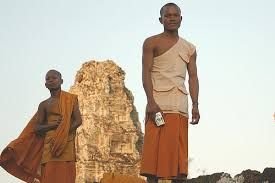
Misconception 4: Chenla conquered Funan
The Chinese regarded Funan as a united kingdom, which at one point was divided into Water- and Land-Chenla. This is not true. The country was divided among multiple kings of Funanese royalty, who in turns gathered more power and subdued one another.
The royalty of Chenla was descended from the same stock as the kings of Funan. The northern Funanese kings grew out to become the most powerful kings of Chenla, and according to inscriptions, it looks like the Northern Funanese were given more power voluntarily, not by force.
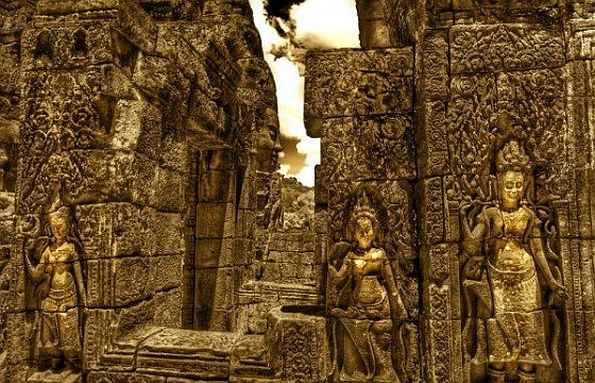
Thanks for reading about the fascinating past of the Khmer!
In part two, I will tell you all about the new Khmer hero, and how a united Cambodia was formed. So keep reading if you are interested!
Congratulations @ericvanhouten! You received a personal award!
Click here to view your Board
Do not miss the last post from @steemitboard:
Vote for @Steemitboard as a witness and get one more award and increased upvotes!
Congratulations @ericvanhouten! You received a personal award!
You can view your badges on your Steem Board and compare to others on the Steem Ranking
Do not miss the last post from @steemitboard:
Vote for @Steemitboard as a witness to get one more award and increased upvotes!